Adrian Collins's Blog, page 114
December 9, 2022
REVIEW: The Last Tale of the Flower Bride by Roshani Chokshi
The Last Tale of the Flower Bride is Roshani Chokshi’s adult novel debut. I’ve read some of her young adult fantasy before and enjoyed it, and her short story was one of my stand out favourites in the Arthurian anthology Sword Stone Table (see my review of the anthology for Grimdark Magazine here). Chokshi has a magical way with words, able to turn a simple sentence into something that draws you into her world and doesn’t let you escape again. And this writing is really where The Last Tale of the Flower Bride excels. A mythical, haunting story told in lyrical prose that almost manages to hide how dark it truly is. This is a lot more literary than much of what we write about here, but it skirts enough on the side of the uncanny and horrific that I think there is a lot of crossover, especially for readers of Silvia Moreno-Garcia, V.E. Schwab or perhaps a gothic Madeline Miller.
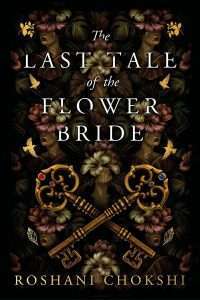 The story weaves the atmosphere of fairy tales with the fervor of a gothic fever dream, making the reader lose sight of reality and fantasy along with the characters. The story follows a bridegroom, married to a mysterious woman named Indigo, her dying aunt and Indigo’s childhood friend Azure, who disappeared without a trace. The Last Tale of the Flower Bride is a novel not driven by plot but by relationships and vignettes, by moments and characters. If you are looking for a linear story or a straight-forward novel, this is probably not the right read for you.
The story weaves the atmosphere of fairy tales with the fervor of a gothic fever dream, making the reader lose sight of reality and fantasy along with the characters. The story follows a bridegroom, married to a mysterious woman named Indigo, her dying aunt and Indigo’s childhood friend Azure, who disappeared without a trace. The Last Tale of the Flower Bride is a novel not driven by plot but by relationships and vignettes, by moments and characters. If you are looking for a linear story or a straight-forward novel, this is probably not the right read for you.
Indigo and Azure, their obsessive friendship destined to end in tragedy (this is not a spoiler, this sentence is actually taken from the cover copy), are a delicious trainwreck waiting to happen – a broken relationship that develops over years but neither can extricate themselves from it. And the way it does end? Unexpected and brilliant, and one of the best moments in the entire book. And the bridegroom and Indigo have such an interesting relationship too, driven by curiosity and mystery, by myths, stories and gifts.
This will not be a book for everyone, but when it does click, this lush, atmospheric story of trust and dysfunctional relationships, of love in all its forms will resonate with you for a long time after you’re done with reading. I know I am already tempted to reread it and see what elements of mythology I can pick up on to look into on a reread – Chokshi clearly drew on her South Asian heritage for this novel, and as someone unfamiliar with the corpus of traditional stories, I am curious to learn more. The Last Tale of the Flower Bride is inspiring, romantic, but also very dark – I think there’s much to like here for the Grimdark reader.
Read The Last Tale of the Flower BrideThe post REVIEW: The Last Tale of the Flower Bride by Roshani Chokshi appeared first on Grimdark Magazine.
December 8, 2022
What is Cyberpunk?
When embarking on a new genre, it’s important to familiarize yourself with the kind of tropes and expectations of them. One of my favorite subgenres is also one of the most influential and, sadly, one of the ones whose roots have strayed furthest from its original source.
I, of course, speak of the titular cyberpunk genre. Cyberpunk influences all walks of fiction and even modern-day life, but few people identify these elements as specifically from the genre anymore. In a very real way, we are living in a cyberpunk world. Nevertheless, cyberpunk is such an influential genre it created Gothic Punk (which gave rise to urban fantasy), steampunk, and numerous other builds as well as defined much of the contemporary or near-future science fiction of the past forty years.
Author Bruce Bethke coined the term cyberpunk for his 1983 short-story, appropriately titled “Cyberpunk.” The etymology of the word also indicates just what it is about. Between the late 16th and the 18th centuries, punk was a common, coarse synonym for prostitute. Shakespeare, himself, used it several times and its vulgarity was part of its appeal.
Punk music, started in the 1970s, was coined as a term for the garage bands of the day that would take on a defiant anti-establishment tone. Cyber is from the word cybernetic, which comes from a Greek word meaning “skilled in steering or governing.” Cybernetics is about technology and tools which interface with us humans.
What does Cyberpunk mean? Bluntly, it means getting ****ed by technology. In its raw essence, cyberpunk is a view of the world which means that technology will not make life better for humanity but only give the oppressor a different means of brutalizing the underclasses. It’s not necessarily a technophobic genre, far from it, but it is an unromantic view of technology’s power.
If I may be so bold, the first cyberpunk novel may be R.U.R or Rossam’s Universal Robots, a 1920 science fiction play by Karl Cabek depicting the oppression of living machines. The roots of technology not being a beneficent force but an oppressive one also shows up in Metropolis and the writings of Ardus Huxley. Huxley, in particular, gave a stunning view of a predominately clone-society ruled by worship of Henry Ford values of greed and industralization in 1931’s Brave New World.
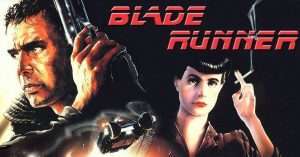 The modern conception of cyberpunk is something entirely different, however, and owes its popularity to two primary sources: the works of William Gibson and the movie version of Blade Runner. Blade Runner provided the public with the view of a used-up science-fiction future where the majority of work was performed by enslaved Replicants (androids so real they bleed, feel, and age). The majority of people were impoverished, sick, and living in the shadow of corporate ziggarauts which were deliberately modeled after those of ancient Babylon.
The modern conception of cyberpunk is something entirely different, however, and owes its popularity to two primary sources: the works of William Gibson and the movie version of Blade Runner. Blade Runner provided the public with the view of a used-up science-fiction future where the majority of work was performed by enslaved Replicants (androids so real they bleed, feel, and age). The majority of people were impoverished, sick, and living in the shadow of corporate ziggarauts which were deliberately modeled after those of ancient Babylon.
William Gibson’s works, particularly Neuromancer, Count Zero, and Mona Lisa Overdrive created the idea of a massive sprawling civilization which had exaggerated almost cartoonish values of materialism and addiction to technology. Despite not knowing a thing about computers, William Gibson created the hacker-hero archetype with Chase and predicted the mportance of safe data transfer with the protagonist of Johnny Mnemonic.
Cyberpunk would proceed to become an influence on animation, roleplaying games, fashion, movies, and video games. Among my favorite of cyberpunk works include the original Bubblegum Crisis, Ghost in the Shell: Stand Alone Complex, Hackers, the Deus Ex games, Mike Pondsmith’s Cyberpunk 2020, Shadowrun, and The Matrix. While the last straddles the line of cyberpunk and post cyberpunk, being about a prophesied messianic figure, it still falls in the line of what the genre is all about.
A lot of fans of the genre love the tropes without actually caring about the meaning. Cyberpunk is one of the first genres to forward style over substance. Fans of the genre often think of mirrorshades, trenchcoats, cybernetics, hacker heroes, ruthless megacorporations, epic poverty, and a general sense of doom brought about by societal collapse. This is all dross, however, for the real heart of the story. Which is man versus machine and society.
Cyberpunk is unique in that it is very pro-technology but also extremely wary of it. Science and technology abound in cyberpunk fiction, to an almost-fetishsized level, but the number of misuses from it are astounding. On a basic level, cyberpunk fiction must believe that technology will not make the world a better place. The flaw is in the human, rather than the machine, though. If technology solves humanity’s problems or makes the world better then it is probably Post-Cyberpunk or simply science-fiction.
I’ve mentioned in previous articles the similarity of cyberpunk to noir fiction. In both settings, the corruption is endemic and irreversible. You may strike against the system, even score a few moral victories, but how much you may actually achieve is questionable. Any salvation the world may achieve is often through the destruction of the old without explaining what will come thereafter.
Some cyberpunk works actually allow the machine to collapse thanks to the efforts of the protagonist, even if this usually comes with some form of cost. There is a strong anarchist sentiment to cyberpunk and it’s not so much the protagonists have a better idea for how to run the world than anything would be better than the status quo. Even so, the protagonists may or may not believe in the positive ends they work toward.
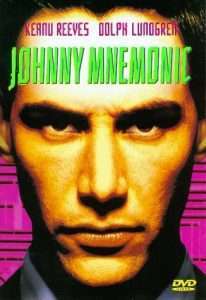 The movie version of Johnny Mnemonic has Johnny struggle against his own extreme selfishness versus a larger social good. Despite the near-apocalyptic nature of the threat, Johnny has to be dragged kicking and screaming toward any positive end. Because of the noir sensibility, cyberpunk heroes tend to be loners and rebels. The flaws of these individuals are as intricate to realizing the setting as their merits. Decker, the protagonist of Blade Runner, is an individual who hunts Replicants for a living despite their apparent humanity. Case in Neuromancer is addicted, physically, to the internet.
The movie version of Johnny Mnemonic has Johnny struggle against his own extreme selfishness versus a larger social good. Despite the near-apocalyptic nature of the threat, Johnny has to be dragged kicking and screaming toward any positive end. Because of the noir sensibility, cyberpunk heroes tend to be loners and rebels. The flaws of these individuals are as intricate to realizing the setting as their merits. Decker, the protagonist of Blade Runner, is an individual who hunts Replicants for a living despite their apparent humanity. Case in Neuromancer is addicted, physically, to the internet.
To live in the general dystopian worlds of cyberpunk and come away unphased will feel inauthentic to all but the most deft of writing. Genuinely noble souls, like Robocop’s Alex Murphy, are often chewed up and spit out by the world–forcing them to rebel because society won’t allow them to be good.
The villains of cyberpunk are typically part of the establishment. They need not be actively malevolent but enforce a status quo which oppresses and dehumanizes. Corporations are a favorite villain in the medium, representing the unchecked growth of greed and profit better than almost any other group. They are not the only sort of villains which can serve as cyberpunk foes, however. Corrupt governments, organized crime, and even mad scientists are all viable enemies for cyberpunk stories.
Paul Verhoven’s Robocop created one of the most perfect cyberpunk villains in the despicable megacorporation Omni Consumer Products (OCP). Omni Consumer Products destroys the life of noble police officer Alex Murphy, feeds off the misery of Detroit’s population like a parasite, and ruins more lives via its business policies than “normal” criminals could ever hope to match.
OCP’s not an uber-efficient evil empire, though, but a bloated fat dragon whose members are so obsessed with their bottom line they’re actually incompetent. OCP does as much damage through cost-cutting as they do through any plans which work. This is embodied by the robot ED-209, which is at once highly dangerous and pathetic. The cool efficiency of many science- fiction villains is absent from cyberpunk as not even the cause of evil is immune to the slow decay of the world.
While the genre was most famous in the Eighties, Reagan economics combining with new trends in globalism as well as mechanization, the world has actually become far closer to the globally integrated but poverty-stricken vision scene in the writings of many writers. Computers are ubiquitous, data is taken from us everywhere, and the wealthy are in bed with the ruling class–so only some things are changing. This means cyberpunk is more relevant now than ever but less distinct from daily reality.
The Watch Dog video games and popular television show Mr. Robot are both distinct cyberpunk works about rebels fighting against the corruption of the world around them with computer knowledge. They also take place in the quote-unquote real world. Contemporary society is something fully capable of hosting cyberpunk stories now. My own Agent G series is base around how the modern day ends up becoming a chrome and mirrorshades dystopia.
So what is the appeal of cyberpunk? In a very real way, it is the allure of raging against the machine. An individual may not be able to make the world a better place but he might be able to strike against the oppressor. Everyone loves a rebel and cyberpunk is an excellent way to exaggerate existing trends before sending your protagonists against them.
The post What is Cyberpunk? appeared first on Grimdark Magazine.
December 7, 2022
REVIEW: Ashes of Onyx by Seth Skorkowsky
Ashes of Onyx by Seth Skorkowsky is the first of a new series by an author I’ve very much enjoyed the previous works of. I’m a huge fan of the Valducan series, which is a set of novels following multiple protagonists wielding magic demon-slaying weapons. I’m also a Tales of the Black Raven fan, which is a collection of compiled short stories featuring a master thief. Finally, I love Seth Skorkowsky’s many Youtube series that were winners of an ENnies Award last year for best game reviews.
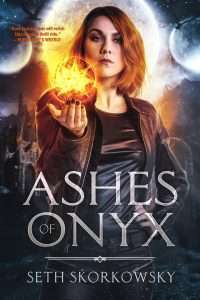 Kate Rossdale is a failed magus, having lost all of her sorcery in a horrific accident that destroyed her tower. This is an urban fantasy version of Earth where humans have Hermetic orders of sorcerers with some references to Aleister Crowley. Kate has been reduced to identifying magical artifacts for collectors in order to fund her drug habit, using dust to substitute for the feeling of sorcery at her fingertips. Kate’s life gets a chance to get back on track, however, when a mysterious benefactor offers her the chance to regain her magic in exchange for being bound to do him a favor of immense value. From there, they find themselves visiting other dimensions and challenging sorcerous overlords.
Kate Rossdale is a failed magus, having lost all of her sorcery in a horrific accident that destroyed her tower. This is an urban fantasy version of Earth where humans have Hermetic orders of sorcerers with some references to Aleister Crowley. Kate has been reduced to identifying magical artifacts for collectors in order to fund her drug habit, using dust to substitute for the feeling of sorcery at her fingertips. Kate’s life gets a chance to get back on track, however, when a mysterious benefactor offers her the chance to regain her magic in exchange for being bound to do him a favor of immense value. From there, they find themselves visiting other dimensions and challenging sorcerous overlords.
I really enjoyed this book, that reminded me a bit of Brian Lumley’s Titus Crow series with its mixture of 1970s-esque psychedelic dimensions, the use of H.P. Lovecraft’s Dreamlands, and its flawed antiheroes. Kate Rossdale is an intriguing heroine and I liked watching her struggle with her addiction and her constant attempt to rationalize why she wasn’t an addict. She recovered her powers a bit too quickly but this helped underscore that her problems with dust went beyond a mere need to feel magic again.
The universe is a fascinating one that manages to be both believable as well as utterly fantastic. The Earth is just one small planet in a very big multiverse of dimensions with ancient cities and extra-planar decisions that exist parallel to our world. It reminded me a bit of Planescape when our heroes arrive in a city on a flat disc and their chief concern is what they’re going to do for money. Cute moments like when our heroes exchange Coca Cola for a fairly large chunk of gold are things that make this novel stand out to me.
The supporting cast is fine with a mixture of misfits and survivors from the destroyed Onyx Tower. Wizard politics mostly exist in the background but are clearly defined and written out so you never lose track of what’s going on. Many people blame Kate for the fall of her house (including herself) but there’s a complicated weave of relationships that makes me think Seth Skorkowsky could easily expand this into a full-fledged series. If I have any complaints, the villain is a tad generic and I would have been liked to know more about her background as well as motivations.
This is a solid urban fantasy for the first half that switches into a full-fledged fantasy novel for the latter. There are some truly satisfying moments here like Kate’s “wizard duel”, the romance developed midway through the book, and also the final confrontation with Kate’s chief tormentor. I think this is a great novel and if you’re looking for a good mage book then you could do a lot worse.
Read Ashes of Onyx by Seth SkorkowskyThe post REVIEW: Ashes of Onyx by Seth Skorkowsky appeared first on Grimdark Magazine.
December 6, 2022
REVIEW: 14 by Peter Clines
I’ve always been a big fan of Peter Clines. When I was writing for Permuted Press, he was still with them and introduced me to his amazing Ex-Heroes series about superheroes trying to protect the world’s remaining humans from the zombie apocalypse. So, when I heard he was doing another horror novel, I was eager to pick it up. 14 is a fantastic horror novel that manages to thread the difficult needle between “fun” and terrifying.
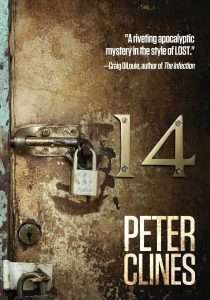 First of all, I’d like to comment on the utter genius of the cover. Usually, I judge a cover on whether it’s serviceable to attract reader attention or not. It’s a rare cover which warrants commentary and they’re usually fantasy (and made in the 1980s or 1930s). In this case, I find 14‘s cover to be shockingly effective at wanting me to open the book and find out what’s inside. It’s evocative, perhaps deliberately so, of the 4th Silent Hill game. Silent Hill 4: The Room wasn’t the most popular of the franchise due to the heavy backtracking but I consider it the point before the franchise became a parody of itself and the last period when Silent Hill was genuinely scary. It’s the little things which scare me and what’s more little than a locked room?
First of all, I’d like to comment on the utter genius of the cover. Usually, I judge a cover on whether it’s serviceable to attract reader attention or not. It’s a rare cover which warrants commentary and they’re usually fantasy (and made in the 1980s or 1930s). In this case, I find 14‘s cover to be shockingly effective at wanting me to open the book and find out what’s inside. It’s evocative, perhaps deliberately so, of the 4th Silent Hill game. Silent Hill 4: The Room wasn’t the most popular of the franchise due to the heavy backtracking but I consider it the point before the franchise became a parody of itself and the last period when Silent Hill was genuinely scary. It’s the little things which scare me and what’s more little than a locked room?
As for the premise? Nate Tucker is a data-entry drone at a magazine with no prospects and no real future. He’s a likable enough everyman and his position is familiar enough to most people my age to illicit immediately sympathy. Nate is in desperate need of a new place to live due to his roommates bailing on him, so he takes advantage of an acquaintance’s suggestion to seek out an apartment building with a checkered history.
There is a unique building in Los Angeles called the Kavach Building that has suspiciously low rent. It does not advertise and only can be l found by word of mouth. Nate lucks out in finding the place and meeting up with a quirky but entertaining bunch of neighbors. The building isn’t magically perfect. It’s got green cockroaches with extra-legs, bad parking, and every room is different in size. The neighbors are all a collection of weirdos with some being the desirable kind (the sexy artist girl who sunbathes on the roof) and others being less so (a militant fundamentalist always in everyone’s business). He soon strikes up a friendship with a pretty South Asian geek who builds customized computers for sale online and a mysterious writer that seems to have inexhaustible knowledge of government agencies.
Nothing, however, leaps out to say this is a dangerous place. Well, except for the locked room on his floor. Oh, and the room which is vacant because it’s last few (dozen) occupants committed suicide. Still, for $550 a month, including utilities, Nate is willing to put up with a lot. Unfortunately, these above problems are only the beginning. Peter Clines walks a careful balance between revealing the secrets of the building while not taking it to the point a reasonable person would run screaming.
The characters remain likable but they also remain intelligent, which is a quality largely absent from the pop horror genre except for The Cabin in the Woods. Individuals expecting a story filled with gore and murder will be disappointed as 14 is more a story of cerebral horror mixed with gradual dawning terror than shock scares. Some people have compared it to Lost with its mixture of character-building and the surreal. On my end, I consider it closer to an episode of The Twilight Zone or The Outer Limits.
The relative absence of cheap scares is what makes this such an effective horror novel. Indeed, I compare it to a movie I recently reviewed called Into the Mouth of Madness. Given Into the Mouth of Madness was one of my favorite horror movies of all time, I’m not as at all unbiased here. There’s a connection to the Cthulhu Mythos for fans of the series but I won’t spoil that to encourage people to people to read it cold.
Really, I think a lot of horror authors could learn from Peter Clines the skill of making likable characters. All of them read as believable individuals you might meet, say, in your apartment building. This makes any potential deaths or trauma they suffer all the more intense as you don’t want them to come to a horrible end, unlike the majority of [insert profanity] who exist in horror= movies as monster fodder. I’m particularly fond of the character of Xela and I kind of wish Peter would write a sequel with her (whether or not that’s possible) because she’s so entertaining on page.
Despite this, I’m not going to give 14 a five out five. This is going to be a strange sort of complaint because it’s related to much of what I find appealing about this book but I think Peter could have gone darker. The Twilight Zone rarely needed a high body count, or one at all, to make itself the seminal work of horror television it was. However, for much of the book, things are relatively lighthearted. While he does some serious damage to the characters, I expected the sheer scope of the final revelations to blast some cast members’ sanity.
It’s the Diet Coke of Lovecraft. Which, I say as someone who wrote a book set in the Cthulhu Mythos starring a character more akin to Conan than Giles. There’s nothing wrong with Diet Coke Lovecraft, though, and I love it when it’s done by Brian Lumley. I also loved it when it was done by Peter Clines. It’s got more calories than Lovecraft Coke Zero and that’s more than enough for me. Still, I definitely recommend this work and think you won’t waste an afternoon or two reading it.
Read 14 by Peter ClinesThe post REVIEW: 14 by Peter Clines appeared first on Grimdark Magazine.
December 5, 2022
REVIEW: An End to Sorrow by Michael R. Fletcher
An End to Sorrow is the concluding novel in the Obsidian Path series by Michael R. Fletcher. Black Stone Heart was a finalist in the 2021 Self-Published Fantasy Blog Off (SPFBO), and with good reason as it’s an excellent book. The follow up novel, She Dreams in Blood, continued Khraen’s quest to piece together his fractured obsidian heart.
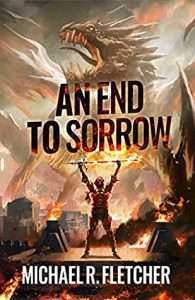 So finally, we come to the resolution of the tale of Khraen, the Demon Emperor, who has been resurrected as a shell of his former self, missing the shards of his heart and with these pieces, his scattered memories. He’s accompanied by his faithful friend and follower, Bren as they attempt to recover the necromancer queen Henska, who might or might not have Kraen’s best interest at heart.
So finally, we come to the resolution of the tale of Khraen, the Demon Emperor, who has been resurrected as a shell of his former self, missing the shards of his heart and with these pieces, his scattered memories. He’s accompanied by his faithful friend and follower, Bren as they attempt to recover the necromancer queen Henska, who might or might not have Kraen’s best interest at heart.
“Once we had a nest egg, we could open a cosy little tavern somewhere, sell good beer and fresh meals to weary travelers. That sounded a lot better than floundering about in Abieszan harbour for my dead wife’s head so she could kill me for being a selfish asshole.”
As we see, Khraen is reluctant to finish his quest and get those final pieces of his former self. At this point he fears that he will lose his chance at redemption and simply fall into the trap of the dominant powers he’d wielded thousands of years ago at his full strength. Bren is his conscience in a way, the one person in his life that Khraen cares for without using or being used by him to achieve sinister ends.
Khraen’s problem now is that the closer he gets to his end goal, the more he loses the man he has become on the journey to achieve those goals. Through the Obsidian Path series, we have seen his character development as he struggles between wanting to reacquire his vast powers of his previous life, but live life now as a better man, learning from the mistakes he has made along the way.
”Somehow, I’d gone from counting every soul, feeling the crushing burden of each, to spending them like flinging copper coins at the poor.”
An End to Sorrow is a continuation (and perhaps the conclusion?) of a study of right and wrong, and the moral self-reflection of a man destined to forge out a new path in the shadow of his villainous history. He learns why he’d made some of the choices in his previous life and in his inward reflection we see that he wasn’t purely evil but had at times a greater good in mind. This moral fiber is driving him in the present as well as he feels the need to do better but at every turn seems to be pulled toward that dark path he’d trod before.
Once more I was amazed at the way Fletcher’s mind works in his narrative voice. I’ve read most of his published works to this point and I always wonder what deep, dark well he draws forth these ideas. He never fails to deliver, and An End to Sorrow is another entry in Fletcher’s study of human motivation and need.
Read An End to Sorrow by Michael R. Fletcher
The post REVIEW: An End to Sorrow by Michael R. Fletcher appeared first on Grimdark Magazine.
December 4, 2022
REVIEW: The Sun’s Devices by Rebecca Levene
The Sun’s Devices by Rebecca Levene tangents from what came before it. If Smiler’s Fair and The Hunter’s Kind were a mirrored duo, then the themes, tone, and focus of the third book in The Hollow Gods complicates the idea of duality. After all, stories have multiple sides, and this is the side of those who have forsaken the gods.
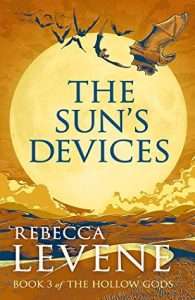 The moon god reborn has finally ascended to his rightful place as the heir to Ashanesland, but he must now win the support of the same people who once tried to kill him. As he attempts to understand the political games of his role, ambassadors from the great and secretive land once known as the Eternal Empire arrive with an invitation. But why would a godless place have a need for the moon god reborn? As if that wasn’t enough, the battle with his greatest enemy is almost upon him. The solution comes from whispers of an elusive weapon called the God Killer. He must find this weapon before anyone else or it could mean the end of everything he holds dear.
The moon god reborn has finally ascended to his rightful place as the heir to Ashanesland, but he must now win the support of the same people who once tried to kill him. As he attempts to understand the political games of his role, ambassadors from the great and secretive land once known as the Eternal Empire arrive with an invitation. But why would a godless place have a need for the moon god reborn? As if that wasn’t enough, the battle with his greatest enemy is almost upon him. The solution comes from whispers of an elusive weapon called the God Killer. He must find this weapon before anyone else or it could mean the end of everything he holds dear.
The Sun’s Devices has the challenge of not only building on its two predecessors, but also merging the divergent pieces of Levene’s overarching plot lines and characters. Where The Hunter’s Kind complicates the reader’s perspective on the war between the moon and the sun, Levene uses this third installment to consider another course: what if there were no gods at all? A running theme throughout the book is the duality concept being a constraint of human understanding and how things can exist beyond it: “Because thus you may understand the world and through understanding, bend it to your will. This pattern: sun-moon, light-dark, order-chaos. It is one you are always drawn to” (397). Levene’s thematic exploration is the highlight of the novel. Her descriptive prose and imaginative settings also continue to be strengths.
The opening pages of The Sun’s Devices sets the tone for the novel and immediately cements it as something unique. This could be potentially jarring for readers. Similarly to The Hunter’s Kind, Levene does introduce new characters to widen the scope of the overarching plot, which means shared page time with established characters. Some story elements and plot points, especially near the end, might feel less fleshed out or rushed in comparison to the previous books. However, the biggest consideration readers should have is with expectation: I went into this book initially thinking it was the final installment. Based on several factors, it’s clear this is not the end of The Hollow Gods. The ending packs a strong punch, and it left me wanting more from this world and this story.
From the difficult choices and morally-grey characters to the violent acts and dubious intentions, Levene leaves no question as to how The Sun’s Devices fits into the grimdark sphere. Very much like the initial cheerfulness of the covers, her style undercuts the notion of blatant darkness and reinvents itself in every book, surprising you with just how bleak things can be. I can’t wait to see what Levene’s mind cooks up next.
Read The Sun’s Devices by Rebecca LeveneThe post REVIEW: The Sun’s Devices by Rebecca Levene appeared first on Grimdark Magazine.
December 3, 2022
The SFF books we can’t wait to read in 2023
I don’t know about you, but it fucking finally feels like the world is starting to tilt back towards normality. And part of that normal is seeing people at Cons again, books being signed by authors in person, live readings, and a genuine excitement at what SFF books are being released in 2023.
As we do each year, I asked around the reviewer team about what SFF books they can’t wait to read next year, and damn, sometimes it takes that discussion to realise just how epic the next twelve months of reading is going to be.
A Woman of the Sword by Anna Smith SparkPicked by John Mauro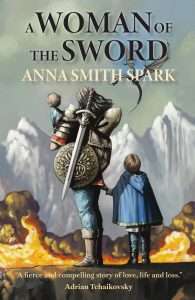 I grovel before our reigning Queen of Grimdark, Anna Smith Spark, in anticipation of her new novel, A Woman of the Sword, which will be released in April 2023. I harbor more than a ounce of envy toward our Editor-in-Chief, Adrian Collins, who already reviewed the ARC for this new grimdark masterpiece, calling it “A book that beats you emotionally senseless…grimdark at its finest…This is Anna Smith Spark at her heart-wrenching, mythic-feeling, storytelling best, and just completely unmissable.” Long live the Queen of Grimdark!
I grovel before our reigning Queen of Grimdark, Anna Smith Spark, in anticipation of her new novel, A Woman of the Sword, which will be released in April 2023. I harbor more than a ounce of envy toward our Editor-in-Chief, Adrian Collins, who already reviewed the ARC for this new grimdark masterpiece, calling it “A book that beats you emotionally senseless…grimdark at its finest…This is Anna Smith Spark at her heart-wrenching, mythic-feeling, storytelling best, and just completely unmissable.” Long live the Queen of Grimdark!
A Woman of the Sword is an epic fantasy seen through the eyes of an ordinary woman. Lidae is a daughter, a wife, a mother – and a great warrior born to fight. Her sword is hungry for killing, her right hand is red with blood.
War is very much a woman’s business. But war is not kind to women. And war is not kind to mothers and their sons.
Read A Woman of the Sword by Anna Smith SparkEmpire of the Vampire book #2 by Jay KristoffPicked by Fiona DentonI still have quite a long wait but it will absolutely be worth it. It will be epically long, gorgeously illustrated, with bloody battles and beautiful writing. Gabriel de Leon is the anti hero i love to love and Kristoff’s pale blood vampires are so deliciously evil. I wanted to know so much more about the world after finishing EOTV and am so impatient for answers. The first book was my hands down favourite of 2021 and my expectations are sky high but I have a feeling that the next installment will exceed them.
At the time of publication of this article, neither a cover nor blurb has been released for this book, but you can find our review of book one, Empire of the Vampire, here.
Blade of Dream by Daniel AbrahamPicked by Angela Gualtieri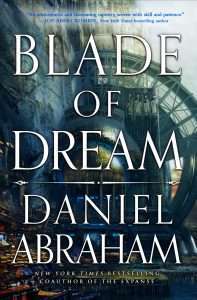 Abraham is one of my favorite authors, and the premise for the Kithamar Trilogy is really unique. I enjoyed Age of Ash, particularly for its themes and setting, so I’m eager to see what he does with the second installment.
Abraham is one of my favorite authors, and the premise for the Kithamar Trilogy is really unique. I enjoyed Age of Ash, particularly for its themes and setting, so I’m eager to see what he does with the second installment.
Kithamar is a center of trade and wealth, an ancient city with a long, bloody history where countless thousands live and their stories endure.
This is Garreth’s.
Garreth Left is heir to one of Kithamar’s most prominent merchant families. The path of his life was paved long before he was born. Learn the family trade, marry to secure wealthy in-laws, and inherit the business when the time is right. But to Garreth, a life chosen for him is no life at all.
In one night, a chance meeting with an enigmatic stranger changes everything. He falls in love with a woman whose name he doesn’t even know, and he will do anything to find her again. His search leads him down corridors and alleys that are best left unexplored, where ancient gods hide in the shadows, and every deal made has a dangerous edge.
The path that Garreth chooses will change the course of not only those he loves, but the entire future of Kithamar’s citizens.
In Kithamar, every story matters — and the fate of the city is woven from them all.
Read Blade of Dream by Daniel AbrahamAlecto the Ninth by Tamsyn MuirPicked by Julia FrazerOriginally intended to come out in 2022, Alecto the Ninth is the fourth and final book in the beloved “lesbian necromancers in space” Locked Tomb series. The book is now expected to be released sometime in 2023. Muir released Nona the Ninth this year, which very much felt like a first act to a very epic conclusion. I look forward to seeing the culmination of so much fun world-building, cool foreshadowing, and unique narrative structures.
At the time of publication of this article, neither a cover nor blurb has been released for this book, but you can find our review of the previous books on the site: Gideon the Ninth, Harrow the Ninth, and Nona the Ninth.
The Traitor by Anthony RyanPicked by Aaron Jones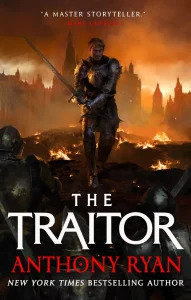 The first two books in the Covenant of Steel trilogy have been incredible and this final entry, if it were to stick the landing, would make the trilogy one of the best series of fantasy in the past decade. Ryan really is a masterful storyteller and this trilogy has shown him at his peak. Deadly feuds, an unreliable narrator, and more intrigue than you can stab a bloody sword at – June 2023 can’t come quick enough!
The first two books in the Covenant of Steel trilogy have been incredible and this final entry, if it were to stick the landing, would make the trilogy one of the best series of fantasy in the past decade. Ryan really is a masterful storyteller and this trilogy has shown him at his peak. Deadly feuds, an unreliable narrator, and more intrigue than you can stab a bloody sword at – June 2023 can’t come quick enough!
The Traitor is the final novel in The Covenant of Steel trilogy, an epic fantasy series of action, intrigue, and magic from Anthony Ryan, a master storyteller who has taken the fantasy world by storm.
You can read Grimdark Magazine’s reviews for the first two books in the series, here: The Pariah, The Martyr.
Read The Traitor by Anthony RyanManifest Delusions #3 by Michael R. FletcherPicked by Carrie Chi LoughThe first book in the series Beyond Redemption released in 2015. While seven years has passed since its release date, it still holds the number one spot in Mark Lawrence’s Grimdark. We’re Nailing It Down! list. This series started my obsession for grimdark so words cannot describe how hyped I am for the final book to drop in August 2023.
At the time of publication of this article, neither a cover nor blurb has been released for this book, but you can find our review of the previous books on the site: Beyond Redemption and The Mirror’s Truth.
Godkiller by Hannah KanerPicked by James Tivendale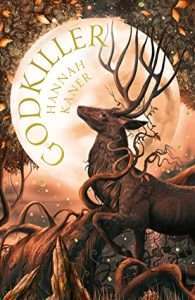 “You are not welcome here, Godkiller” is a simple statement that piqued my curiosity when I opened the package that included Hannah Kaner’s upcoming fantasy debut. I was so intrigued that I opted to read Godkiller next. I’m content that I did as this release is a fascinating and engaging dark fantasy adventure reminiscent of Sapkowski’s The Witcher series. It is extremely well-written, features excellent pacing and contains some wonderful twists.
“You are not welcome here, Godkiller” is a simple statement that piqued my curiosity when I opened the package that included Hannah Kaner’s upcoming fantasy debut. I was so intrigued that I opted to read Godkiller next. I’m content that I did as this release is a fascinating and engaging dark fantasy adventure reminiscent of Sapkowski’s The Witcher series. It is extremely well-written, features excellent pacing and contains some wonderful twists.
Kissen’s family were killed by zealots of a fire god. Now, she makes a living killing gods, and enjoys it. That is until she finds a god she cannot kill: Skedi, a god of white lies, has somehow bound himself to a young noble, and they are both on the run from unknown assassins.
Joined by a disillusioned knight on a secret quest, they must travel to the ruined city of Blenraden, where the last of the wild gods reside, to each beg a favour.
Pursued by demons, and in the midst of burgeoning civil war, they will all face a reckoning – something is rotting at the heart of their world, and only they can be the ones to stop it.
Read Godkiller by Hannah KanerHell Bent by Leigh BardugoPicked by Shannon Hellyer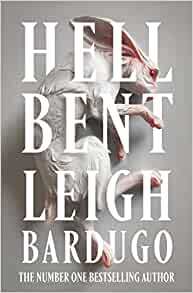 I’ve been looking forward to the sequel of Ninth House for a while now. The original was a great blend of urban fantasy and horror. Some really messed up stuff happens in it.
I’ve been looking forward to the sequel of Ninth House for a while now. The original was a great blend of urban fantasy and horror. Some really messed up stuff happens in it.
Find a gateway to the underworld. Steal a soul out of hell. A simple plan, except people who make this particular journey rarely come back. But Galaxy “Alex” Stern is determined to break Darlington out of purgatory?even if it costs her a future at Lethe and at Yale.
Forbidden from attempting a rescue, Alex and Dawes can’t call on the Ninth House for help, so they assemble a team of dubious allies to save the gentleman of Lethe. Together, they will have to navigate a maze of arcane texts and bizarre artifacts to uncover the societies’ most closely guarded secrets, and break every rule doing it. But when faculty members begin to die off, Alex knows these aren’t just accidents. Something deadly is at work in New Haven, and if she is going to survive, she’ll have to reckon with the monsters of her past and a darkness built into the university’s very walls.
Thick with history and packed with Bardugo’s signature twists, Hell Bent brings to life an intricate world full of magic, violence, and all too real monsters.
Read Hell Bent by Leigh BardugoThe Adventures of Amina al-Sirafi by Shannon ChakrabortyPicked by Fabienne Schwizer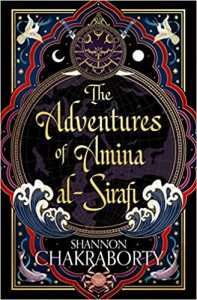 I thoroughly enjoyed Shannon Chakraborty’s Daevabad trilogy, and she has levelled up again for The Adventures of Amina al-Sirafi. Grounded in history and the context of the Crusades, this story is embedded in the real world with a lighter touch on the fantasy. The focus is on the wits and personality of pirate captain Amina, fresh out of retirement. Neither young not beautiful, she is an unusual but brilliant leading character in an exiting adventure full of fun, danger and betrayal. I also love the seamless weaving in of a variety of queer characters.
I thoroughly enjoyed Shannon Chakraborty’s Daevabad trilogy, and she has levelled up again for The Adventures of Amina al-Sirafi. Grounded in history and the context of the Crusades, this story is embedded in the real world with a lighter touch on the fantasy. The focus is on the wits and personality of pirate captain Amina, fresh out of retirement. Neither young not beautiful, she is an unusual but brilliant leading character in an exiting adventure full of fun, danger and betrayal. I also love the seamless weaving in of a variety of queer characters.
Amina al-Sirafi has survived backstabbing rogues, vengeful merchant princes, several husbands, and one actual demon to retire peacefully with her family to a life of piety, motherhood, and absolutely nothing that hints of the supernatural.
But when she’s offered a job no bandit could refuse, she jumps at the chance for one final adventure with her old crew that will make her a legend and offers a fortune that will secure her and her family’s future forever.
Yet the deeper Amina dives the higher the stakes. For there’s always risk in wanting to become a legend, to seize one last chance at glory, to savour just a bit more power…and the price might be your very soul.
Read The Adventures of Amina al-Sirafi by Shannon ChakrabortyHow to Sell a Haunted House by Grady HendrixPicked by Elizabeth Tabler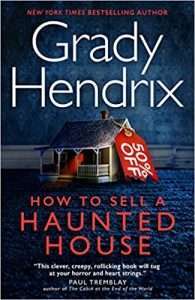 The book I am most looking forward to reading comes out in January of 2023, How to Sell a Haunted House by Grady Hendrix. Hendrix has quickly become one of my favorite authors over the last few years with his remarkable ability to scare and delight in equal measure. Knowing him, a classic Haunted House story that he can twist, manipulate, and leave the audience guessing is right up my alley. Come for the horror; stay for the twisted family dynamics and a probable unreliable narrator that will leave me saying, “What the fuck?” in the best possible way.
The book I am most looking forward to reading comes out in January of 2023, How to Sell a Haunted House by Grady Hendrix. Hendrix has quickly become one of my favorite authors over the last few years with his remarkable ability to scare and delight in equal measure. Knowing him, a classic Haunted House story that he can twist, manipulate, and leave the audience guessing is right up my alley. Come for the horror; stay for the twisted family dynamics and a probable unreliable narrator that will leave me saying, “What the fuck?” in the best possible way.
Your past and your family can haunt you like nothing else… A hilarious and terrifying new novel from the New York Times bestselling author of The Final Girl Support Group.
When Louise finds out her parents have died, she dreads going home. She doesn’t want to leave her daughter with her ex and fly to Charleston. She doesn’t want to deal with her family home, stuffed to the rafters with the remnants of her father’s academic career and her mother’s lifelong obsession with puppets and dolls. She doesn’t want to learn how to live without the two people who knew and loved her best in the world.
Mostly, she doesn’t want to deal with her brother, Mark, who never left their hometown, gets fired from one job after another, and resents her success. But she’ll need his help to get the house ready for sale because it’ll take more than some new paint on the walls and clearing out a lifetime of memories to get this place on the market.
Some houses don’t want to be sold, and their home has other plans for both of them…
Read How to Sell a Haunted House by Grady HendrixThe Tyranny of Faith by Richard SwanPicked by Adrian Collins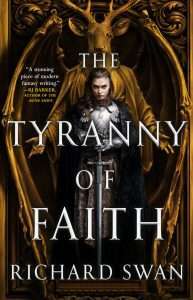 For me, it’s The Tyranny of Faith by Richard Swan. The Justice of Kings was absolutely engrossing, with a brutal medieval world, plenty of intrigue, necromancy for the “good” guys (for the win!) and so much more. This series is going to be a big deal in the dark fantasy world, and I cannot wait to get the ARC.
For me, it’s The Tyranny of Faith by Richard Swan. The Justice of Kings was absolutely engrossing, with a brutal medieval world, plenty of intrigue, necromancy for the “good” guys (for the win!) and so much more. This series is going to be a big deal in the dark fantasy world, and I cannot wait to get the ARC.
A Justice’s work is never done.
The Battle of Galen’s Vale is over, but the war for the Empire’s future has just begun.
Concerned by rumours that the Magistratum’s authority is waning, Sir Konrad Vonvalt returns to Sova to find the capital city gripped by intrigue and whispers of rebellion. In the Senate, patricians speak openly against the Emperor, while fanatics preach holy vengeance on the streets.
Yet facing down these threats to the throne will have to wait, for the Emperor’s grandson has been kidnapped – and Vonvalt is charged with rescuing the missing prince.
His quest will lead Vonvalt – and his allies Helena, Bressinger and Sir Radomir – to the Empire’s southern frontier, where they will once again face the puritanical fury of Bartholomew Claver and his templar knights . . . and a dark power far more terrifying than they could have imagined.
Read The Tyranny of Faith by Richard SwanThe post The SFF books we can’t wait to read in 2023 appeared first on Grimdark Magazine.
December 2, 2022
REVIEW: Witchbringer by Steven B. Fischer
In Steven B. Fischer’s brilliant Witchbringer we get the kind of Imperial Guard story I love to read–one where you end up just as invested in the regiment as you do in the protagonists. I haven’t enjoyed a Guard book from Black Library this much since the last Dan Abnett Gaunt’s Ghosts book I read.
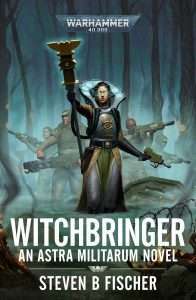 In Witchfinder, Glavia Aerand is at the end of her psyker training (for those new to Warhammer 40k, these are essentially space wizards)–a place most don’t survive to ever serve the eternal Emperor on his endless battlefields. A premonition leads her to a half flooded world of Visage and her old regiment the Cadian 900th, as they struggle against the mists, the traitor guard, and something far more terrifying.
In Witchfinder, Glavia Aerand is at the end of her psyker training (for those new to Warhammer 40k, these are essentially space wizards)–a place most don’t survive to ever serve the eternal Emperor on his endless battlefields. A premonition leads her to a half flooded world of Visage and her old regiment the Cadian 900th, as they struggle against the mists, the traitor guard, and something far more terrifying.
Aerand is there replacing her old mentor, who has disappeared from his position in the 900th, assumed lost to Visage’s endless mists. His words, a part of her premonition, echo in their efforts to keep her away from Visage. When she returns to find her old arrogant subordinate in command of the 900th, and nobody can remember her mentor, she knows something is off.
Fischer really hits the mark with what I read Warhammer 40,000 for. Witchbringer is grim as hell, moreish AF, and gets you invested in the regiment and the characters within. It’s Band of Brothers millennia in the future, and I just get a huge kick out of when these 40k books are done well. I am also generally not a big fan of warp scenes and getting in deep with psyker characters (in much the same way as I prefer low magic to highly detailed magic systems in fantasy) but I really loved the way engagement with the warp and it’s horrifying powers, as well as with the light of the God-Emperor, was presented. Again, a massive high five to the author.
I also really enjoyed the very short one page insights into the mind of the traitor guard colonel. These are really well done, really engaging, and in no way distracting from the story, or superfluous bits of self indulgence from the author. These scenes add depth to the story to help Witchbringer avoid falling into the trap of the enemies being the big evil just for the sake of it.
Not since reading Dan Abnett’s Gaunt’s Ghosts series have I enjoyed reading about the Imperial Guard this much, nor looked so forward to the next book. I am thoroughly invested in Aerand and the Cadian 900th, and cannot wait for book two.
Read Witchbringer by Steven B. FischerThe post REVIEW: Witchbringer by Steven B. Fischer appeared first on Grimdark Magazine.
December 1, 2022
REVIEW: The Definition of Vengeance by Kevin Wright
The Definition of Vengeance by Kevin Wright is the third installment of the Serpent Knight Saga. A particularly excellent example of grimdark, it is a continuing series of supernatural adventures during the Black Death starring a corrupt Medieval Knight and his unusual band of companions. It’s a little bit of Dark Souls, a little bit of A Plague Tale, and some Kingdom Come Deliverance thrown in. If you’re wondering why I chose video games to represent the writing style, there’s not really a deeper meaning there, they just reminded me of the story.
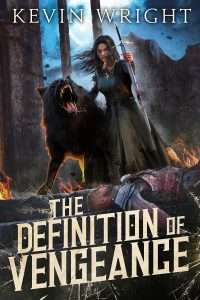 Sir Luther Slythe Krait finds himself once more in a new location riddled with corruption, superstition, and evil happenings. This time we are doing a murder mystery with our antihero protagonist tracking down the murderer of a young girl, Hilda. This is the smallest stakes of the three books so far and we get a more intimate story versus the larger epics of the previous two volumes. This benefits the tale as we get more focus on the protagonist versus his supporting cast and to be honest this is a good choice since his dark cynical worldview is the strongest of the narratives.
Sir Luther Slythe Krait finds himself once more in a new location riddled with corruption, superstition, and evil happenings. This time we are doing a murder mystery with our antihero protagonist tracking down the murderer of a young girl, Hilda. This is the smallest stakes of the three books so far and we get a more intimate story versus the larger epics of the previous two volumes. This benefits the tale as we get more focus on the protagonist versus his supporting cast and to be honest this is a good choice since his dark cynical worldview is the strongest of the narratives.
If you aren’t familiar with the Serpent Knight Saga, Luther is closest probably to Westeros’ Hound but with a much more sardonic cynical humor. He’s a corrupt man who is well aware the world he inhabits is utterly absurd and vile, so he’s largely abandoned himself to being a hedonistic corrupt officer. However, like so many noir protagonists, there remains those one or two lines he refuses to cross and compels him to try to do something against the corruption he finds.
Kevin Wright has an exaggerated but not unbelievable style to his worldbuilding. His is the kind of rainy, muddy, perpetually overcast, and dark medieval world where everyone is one particular shade of scumbag after another. It is evocative and jumps off the page in a way that not many other authors can match. In a very real way, his mythologized version of Eastern Europe is as much a star as Luther himself.
I appreciated the more tightly focused and character-specific storytelling in The Definition of Vengeance but some fans may be annoyed that instead of the stakes raising or a larger view of the setting opening up, it has instead become smaller. I don’t have this problem because I don’t believe that would be fitting with the themes established.
Sir Luther is something of a noir hero. He can’t change the systemic and cultural evils of the Dark Ages nor meaningfully make improvements even on a personal level. He’s also, despite how entertaining he may be, a genuinely terrible person with a few redeeming qualities. You enjoy him for telling off the Prioress of the Abbey of Saint Helenas for how ridiculous her pretensions are not his personal virtue.
One interesting element of the story is Sir Luther’s dealings between the local village and the Romani people in the area. The villagers treat them like crap and they’re less than pleased at the locals in return. The death of the young girl becomes a potential flashpoint between them and only Luther is even mildly interested in finding the actual culprit versus an easy scapegoat.
Basically, if you’re looking for properly dark grimdark fantasy with a bit of crude humor as well as scathing satire of social institutions of the Middle Ages then this is certainly the book for you. I’ve enjoyed the entirety of the Serpent Knight Saga (Lords of Asylum, and The Last Benediction of Steel) and think it is one of the better independent grimdark works out there.
Read The Definition of Vengeance by Kevin WrightThe post REVIEW: The Definition of Vengeance by Kevin Wright appeared first on Grimdark Magazine.
November 30, 2022
An interview with Jake Donkersgoed, creator of The Doors of Trithius
It’s been a slow few months for me, but it’s time I change that. Today, I bring you a first for Grimdark Magazine: game developer interviews! Today, I bring an interview with game developer Jake Donkersgoed, creator of indie RPG The Doors of Trithius, an RPG roguelike set in a randomly generated fantasy world. You fight monsters, avoid traps, collect loot, manage your wounds and more as you traverse the mysterious world of Enalia.
Jake was awesome enough to shoot me over a code of the game (which I’ll be reviewing in the coming weeks), but for now, let’s dive in with Jake and chat about The Doors of Trithius, being a games developer, and dealing with the market response to your work.
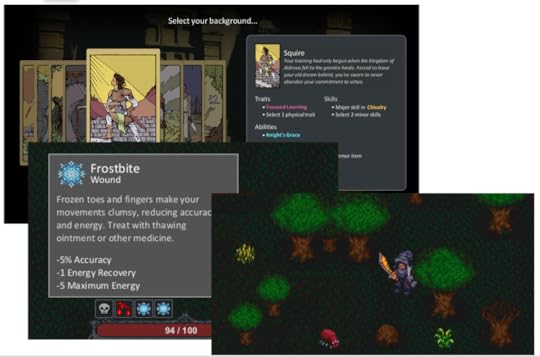
[MB] First of all, tell me about yourself! What do you do?
[JD] I’m Jake Donkersgoed (aka Sineso), creator of the open-world RPG The Doors of Trithius.
The project started in 2020. There’s this moment I remember from early that year. I’m at my computer looking through an old folder filled with half-finished games built up from over the years – basically a graveyard of unfinished projects – and the truth hit me hard. If I was ever going to complete a game it was now or never. The Doors of Trithius is the result of that decision. Soon after, I quit my job as a software developer and began working on the game full time.
[MB] What does being a game designer actually mean?
[JD] For me, it means writing documents. Lots of documents. If your ideas are not on paper or in the game they don’t exist. Having “an idea” is not worth much until you can express what it is, how it works, and how it all fits together. Show your work.
On the other hand, there’s the artistic element. The seed of a vision. That numinous deep thing that wants to be expressed. Without that, the rest is impossible. The trick is to solve problems logically and carefully without letting go of that initial seed of desire and wonder.
In more practical terms, most times my process starts with the question “what experience am I trying to create?”. Once I have that answer, I design game mechanics to support that experience. Without this experiential element there is a risk design becomes a game of math abstractions, losing sight of the human element.
[MB] Can you tell our readers about The Doors of Trithius?
[JD] The Doors of Trithius is an open world RPG with a strong emphasis on procedural generation. One way I like to explain it is that I always loved the Elder Scrolls games, but felt those games were limited by their graphical fidelity. What if an open-world RPG could have hundreds of monster types, abilities, and quests? How far can we ramp up the content, variety, and that feeling of wonder – how far can it go when using pixel art and not be limited by 3D graphics?
The second way I would describe this project is an attempt to create a certain type of experience. I want to surprise players with weird, strange, and seemingly random things happening. Emergent or complex behavior that is not obvious on the surface level, but through exploration reveals an underlying order and unity. Enalia is a world thriving with monsters and magical happenings that lets the player decide where to go, and what systems to interact with, based on their own curiosity and level of skill.
[MB] As anyone who creates anything, we must all deal with criticism from consumers. How do you go about it particularly in the prolific and viral standard of gaming today?
[JD] Acceptance. Emotions are always correct. If a player has a bad experience, that is a brute fact, and cannot be argued with. This acceptance is necessary to empathize with players. There is no need to control or fight or try to change a player’s mind. Bad experiences are ok.
Empathy is one thing. Taking advice however is another. The real danger is in paying too close attention to players proposed design solutions. Their experiences are invaluable, which is why I love watching twitch streams and players play live, but player suggestions are almost never quite right, or at least not complete. After all, that’s your job as a designer, to draw from your vision to produce the type of experience you are aiming for.
The cliché “if you love it you’ll let it free” has been helpful to me as well in this regard. The ego can become too attached. Make something beautiful, but never cling. The Gods love courage.
[MB] What advice would you give new developers taking the plunge into game design?
[JD] Pretend you have a deadline, an audience, players. Make it real. I remember before the game was even on steam I was writing patch notes and releasing updates every 2 weeks. These versions I sent to my roommate and friends.
Sometimes a version would go by with no one to play it but myself. It didn’t matter. On the evening of the new release, I would be scrambling to have it ready in time. I wrote those patch notes as if I had players. It was my prayer, and I took it seriously “here you go universe, here is my effort, here is my dream – take it”.
If you’re reading this I’m sure you’ve heard this type of advice before, but it’s the truth. Any endeavor requires a leap of faith. The momentum comes after. Act first.
This, of course, is if you want to take the path I did starting as a solo Indie developer. There are other paths in game design of which I know less.
[MB] If you still have time to play video games, what are some of your favorite ones to play?
[JD] Deep diving into a complex game is my favorite. Recently I’ve been enjoying Stellaris, such a beautiful game with so many design solutions packed in.
Typically I try to avoid games similar to my own. I don’t want to accidentally start thinking and designing in terms of a similar game. The further you travel for inspiration; the stranger and more novel of solutions you will encounter. That means playing other games, yes, but also nature, books, movies, swimming. Ask a question in the right way and everything seems to speak to it.
[MB] What inspires you to do what you do?
[JD] There’s something self-referential in the experience of creating. We want to inspire others, so they can create and inspire others, who become inspired and then inspire even more, on and on. But I’m thankful to be part of this strangeloop. I’m thankful just to be on the carousel, potentially inspiring whoever will be next.
In short, that someone playing my game could – through that experience – see something new about themselves or in the world is massively inspiring. If it’s true the world is magic, we have to find a way to say it.
[MB] What is the hardest part of your job?
[JD] Task initiation. Sitting down and getting started. Once a train is moving it’s easy to keep going. But that first hump, it can be so difficult. Sometimes I have to set a timer and tell myself “you will work on this item without a single pause for X minutes”. I imagine I’m a sprinter. The timer starts like a gunshot and there is no going back. Right foot, left foot, right foot, keep going.
The other hard challenge is when a tension emerges between two good design ideas. Letting go of something you really wanted to make room for another feature is hard. There was a long period of about a month where I was stuck because I couldn’t figure out how to implement quests in the way that I wanted if the world remained 100% procedurally generated, with no guarantee of what dungeons or locations would be spawned into the map. There was no way forward without letting something go. This for me is the hardest art.
[MB] What was your favorite thing about game development?
[JD] The feeling of growth. We never know where we are until we move. Every time a new feature is added, a bug is fixed, whatever it is, there is a feeling of moving towards something. This expansion builds momentum to continue moving forward.
[MB] What lessons have you learned from your first game?
[JD] Routine over motivation. Write documents. Set time limits and don’t get stuck fiddling. Understand the difference between “real work” and “fake work” where you know in your heart you are not making real progress. Commit to doing some amount of real work every day. Ignore the competition. Don’t work on two tasks at once – planning long-term is one task, implementation is another. These are some ideas that have helped me immensely, or perhaps I should say, have survived their utility having worked 2 years as an indie developer.
[MB] What are your future project(s)?
[JD] I intend to keep working on The Doors of Trithius long-term. The goal is for a world so massive players discover new features on every playthrough.
[MB] If you couldn’t be a game developer, what ideal job would you like to do?
[JD] Music, philosophy, chess, reading. The feeling I have is that when I follow an interest, the world expands like a fractal. Whatever is needed will appear.
[MB] Finally, what is your ideal video game if money and time was no object?
[JD] If you’ve read the book Ender’s Game, something like the video game he plays while at the training school. This would mean using AI to generate stories that would infinitely unravel in any direction the player wants to take it. It would be like the web-based game “AI dungeon”, but taken to the absolute extreme.
Honestly, that might be the game we’re playing right now.
Check out The Doors of Trithius on Steam.
The post An interview with Jake Donkersgoed, creator of The Doors of Trithius appeared first on Grimdark Magazine.



